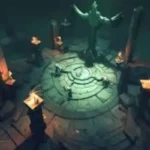Why Your Lawn Looks Sloppy And How an Edger Fixes It
You mow it regularly. You water it enough. You even throw down fertilizer now and then. But something still feels off. The lawn doesn’t look sharp or polished. It lacks that clean, finished look that instantly catches your eye in a well-maintained yard.
The truth is, it’s probably not the grass itself that’s letting you down. It’s the edges.
The Problem Isn’t Your Grass — It’s the Border
Most people focus on the center of their lawn. They obsess over the height of the grass, the thickness, the green color. But even a healthy, full lawn can look rough if the edges are untidy. It’s like wearing a tailored suit with frayed hems. No matter how well-fitted the rest is, something feels off.
Lawn edges are the first and last thing you notice. When they’re neat, the whole yard looks intentional and cared for. When they’re messy, everything feels unfinished. This is where a lawn edger comes in.
What Exactly Does an Edger Do?
An edger is made to cut crisp, defined lines between your lawn and other surfaces. That includes sidewalks, driveways, patios, garden beds, and curbs. Unlike a string trimmer or mower, which handles broad areas and basic cleanup, an edger goes deeper and more precise. It creates a physical separation between grass and everything else.
That separation is what makes a lawn look professionally maintained.
Here’s what a proper edge can do:
- Define borders – Makes the boundary between your lawn and hard surfaces clear and consistent
- Prevent grass overgrowth – Stops runners or blades from spilling onto sidewalks or flowerbeds
- Create symmetry – Gives your lawn a structured shape that matches on all sides
- Improve curb appeal – Makes the yard pop instantly, even if the grass itself isn’t perfect
- Reduce cleanup time – Helps manage creeping grass before it becomes a bigger job
Why Mowing Alone Doesn’t Cut It
Mowing only trims the top of the grass. It doesn’t handle the horizontal sprawl that happens along the edges. Over time, grass starts to creep past concrete joints, between cracks, or into mulch beds. This creates a fuzzy or shaggy border that no amount of mowing can fix.
Even if you try to use a string trimmer to manage those borders, it won’t cut down into the soil to remove the thick root overgrowth that forms where grass meets pavement. And when the edges grow in uneven, your whole lawn starts to look like it’s melting into the sidewalk.
A lawn edger doesn’t just tidy things up. It restores shape and structure.
When Should You Edge Your Lawn?
The good news is, you don’t need to edge every time you mow. But it does need to be done consistently. A good rule of thumb is to edge every second or third mow during the growing season. If your grass grows quickly or you’re in a wetter climate, you might need to do it more often.
Timing also matters. It’s easier to edge when the ground is slightly moist but not soaked. That way, the soil gives a little but doesn’t turn into mud. Avoid edging during extreme drought, as cutting into dry soil can damage your lawn’s root structure and make regrowth harder.
What Kind of Edger Should You Use?
There are a few types of edgers: manual, electric, and gas-powered. Manual ones are fine for smaller yards or if you like the old-school touch. For medium to large lawns, electric or gas models will save time and give a cleaner result with less effort.
It’s not just about power, though. Blade shape, depth settings, and wheel guides all make a difference in how precise and easy the process feels. If your lawn has a lot of tight corners, curves, or obstacles like fences and stonework, look for an edger that lets you adjust angles easily.
Signs Your Lawn Needs Edging
You might not even realize how much edging your lawn needs until you look at it closely. A few signs are easy to spot:
- Grass growing over sidewalks or driveways
- Uneven or wavy lawn edges
- Dirt spilling onto hard surfaces after mowing
- Flower beds being invaded by grass from the sides
- Edges that look flat or blended rather than clearly separated
If you notice any of those, edging could make a big impact immediately. The difference is often night and day, even if you don’t change anything else about your yard routine.
How to Make the Most of Edging
A clean edge won’t last forever. Grass grows fast, especially at the edges where it’s reaching for open space. So, the key is consistency. Even a quick touch-up every couple of weeks can maintain that sharp line.
Here’s how to keep it simple:
- Edge on a schedule – Sync it with your mowing routine to avoid forgetting
- Go slow at first – Especially if the edges are overgrown, take your time to avoid tearing up the soil
- Keep your blade sharp – A dull blade tears instead of slicing, leaving rough edges
- Clean up right after – Use a broom or blower to remove grass debris so the edges stand out
Edging vs. Trimming — Know the Difference
One common mistake is thinking edging and trimming are the same thing. They’re not. Trimming cleans up stray grass blades that a mower can’t reach, usually around trees, fences, or walls. Edging, on the other hand, creates that clear line along a border.
Both are useful, but only edging gives you that crisp, defined outline. Trimming polishes what’s already there. Edging reshapes it completely.
The Real Impact of Edging
It’s not about impressing the neighbors or making the yard look like a golf course. It’s about creating a finished, cared-for space. A well-edged lawn doesn’t just look better. It feels more manageable, more organized, and more satisfying to maintain.
You’ll notice it every time you walk up the path or look out the window. That clean line adds polish in a way that no amount of watering or fertilizing can achieve.
The Final Cut: Where the Difference Really Lies
If your lawn still looks a bit sloppy, even after all the mowing and upkeep, look down at the edges. That’s probably where the problem is.
It’s easy to overlook, but once you edge for the first time and see the result, it becomes part of the routine. The lawn suddenly clicks into place. It looks sharper, more deliberate, and much easier to maintain.
The difference isn’t in the grass height or the type of seed. It’s in the line between lawn and not-lawn. Keep that line clean, and everything else falls into place.







